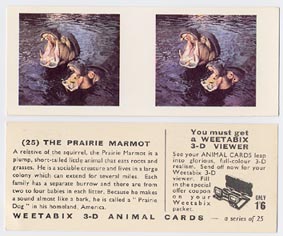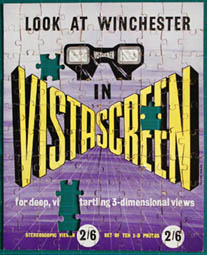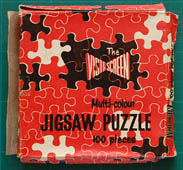|
THE VISTASCREEN™
STORY (In Brief) |
|
The Vistascreen Story The
Photographer
*Purchase
Re-issued Occasionally we have Original |
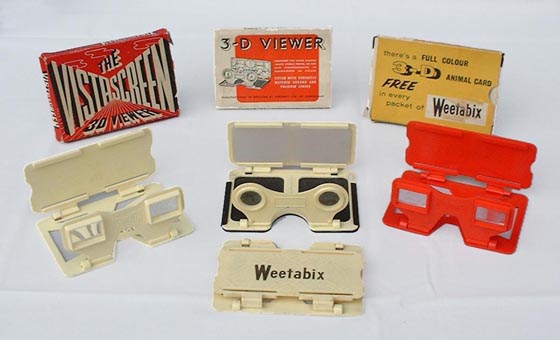 |
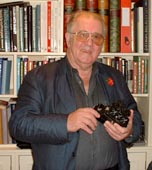 |
THE PHOTOGRAPHER |
|
|
|
THE VISTASCREEN CONCEPT At around this time, the US based Sawyers company had the 3D world pretty much sewn up with their View Master system. However their extensive range of subjects was understandably biased towards the US market and only included a handful of British locations. So, with overseas travel or holiday’s way out of the reach of most of the UK population at that time, much of the View Master output was of limited interest here in the UK. Stanley was convinced that there were several gaps in the View Master market that could be exploited so, with no experience in stereo photography, Stanley almost single-handily invented and produced one of the more commercially successful of all modern 3D systems – Vistascreen. To keep costs down all photographs were to be in black and white and it was hoped that these 3D sets would eventually replace the local, concertina-style postcard sets then on sale at seaside and other holiday locations. He explained his idea to his fellow directors, who both thought it was a sure fire winner and a set of test photos were taken. The difficult part now would be to make a cheap but workable stereo viewer of reasonable quality. |
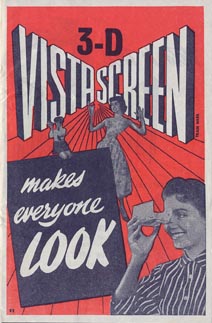 |
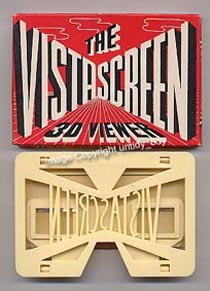 |
THE VIEWER Stanley set about designing a stereo viewer and quickly decided it should be based on the 3D viewer that came with the Coronet 3D camera (see top image). However this viewer was fairly high quality, the trick would be to produce a Vistascreen viewer that could sell for 2/6 (retail) and with up to a 50% discount for wholesalers. After trying several suppliers, most of whom had trouble producing a reasonable quality, thin, distortion-free injection moulded plastic product for just a few pence, a company was finally chosen. After a few experiments they managed to get the viewer body parts right, but the problem was now the lenses. Finally, after a few false starts Combined Optical Industries in Slough, Berkshire, actually came up with a lens that could be produced by injection moulding at the right price. |
|
THE STEREO CARDS A long list of places of interest was drawn up, including caves, zoos, seaside resorts and other places that day-trippers visited. Also many stately homes were just starting to open their doors to the public for the first time and these would prove suitable subjects for a series of 3D sets. Vistascreen therefore set about selling the idea to the souvenir kiosks and shop managers at each attraction. Eventually almost 300 Vistascreen sets of 10 views were produced, mostly photographed by Stanley, although other photographers were occasionally used. As time and money were really limited on each photographic trip, Stanley Long simply could not afford to spend several days in each location scouting around for the most photogenic or important scenes. So he simply arrived in town, went into the first newsagent he found and bought a set of postcards and a map. Inspired when you think about it! |
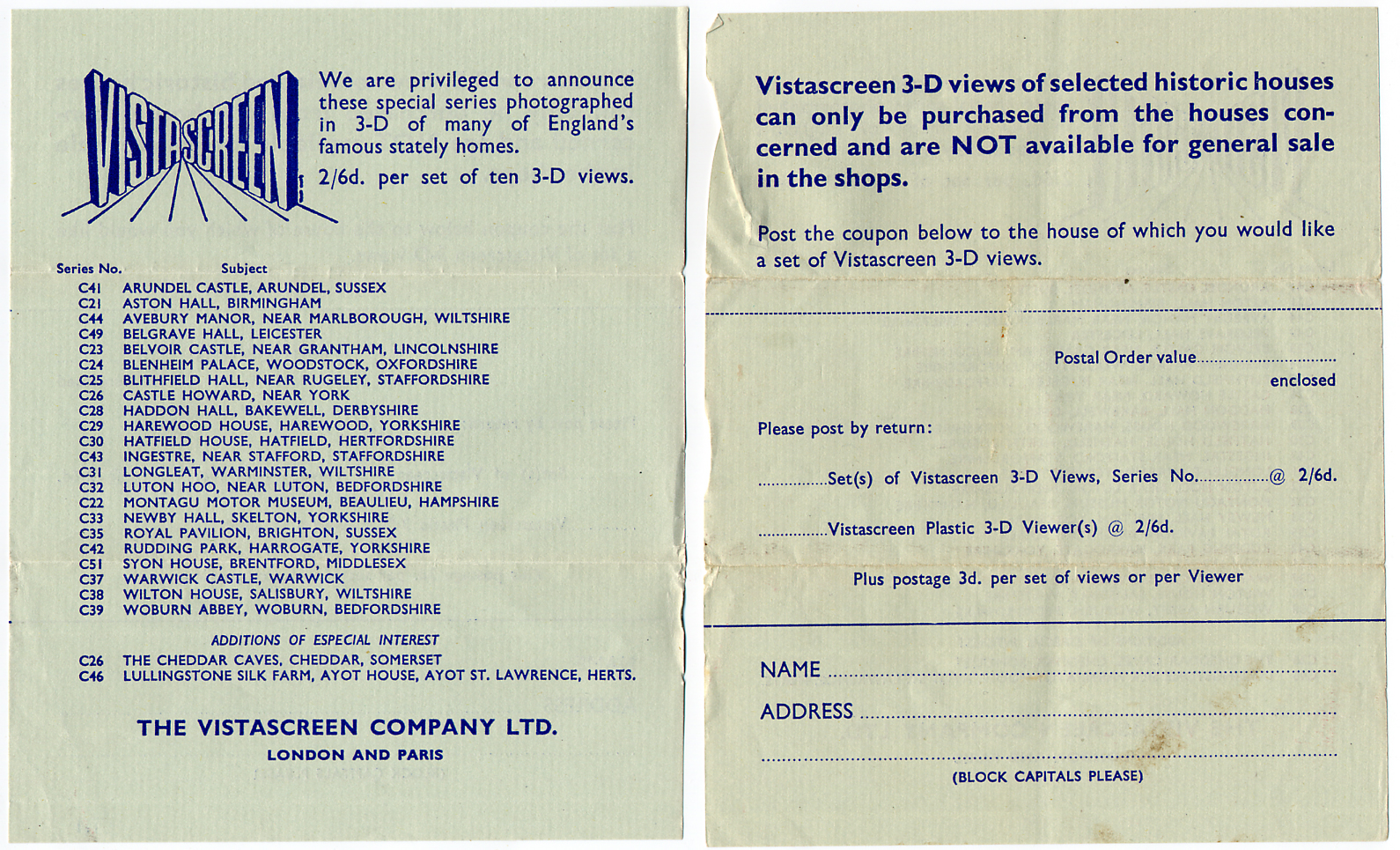 |
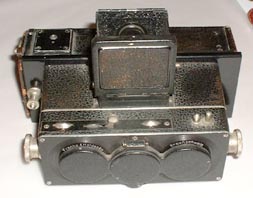 |
PHOTOGRAPHY, CAMERAS & FILM Photography was undertaken in whatever weather conditions prevailed at the time. Stanley shot regardless. The fact that he only ever used black and white film meant that inclement weather wouldn’t always show up and any shots taken in dull conditions could be ‘adjusted’ by manipulating film development times if necessary. The quality of the photographs had to be as good as possible to start with as, by the time the finished product was produced, they were probably fifth generation copies. Stanley used a 1920s Rollei Heidoscope stereo camera with a plate back for almost all his Vistascreen shots - and he still has this camera today! (see image, left). Around six different plate backs were used, and these could easily be reloaded later that evening in the bathroom of the hotel or guesthouse where he was staying. Ilford FP3 plates were preferred because, although slightly slow, they tended to be less contrasty than the Kodak equivalent at the time. This was to be a definite bonus as the negatives would need to be copied several times. |
|
DUPLICATING & DISTRIBUTION Stanley had devised his own system whereby a set of ten shots would fit on a single glass plate and from there they could easily be duplicated and a master negative produced, from which the bulk Vistascreen sets could be printed. The 10 glass stereo pairs were laid on a sheet of P1200 plate film to make a positive. That in turn would be contacted onto another P1200 plate to make a master negative. This plate then had the captions stripped in and any areas to remain blank were covered with photo-opaque paint. The finished plate was then sent off for printing and cutting. Image, right, is a rare, uncut sheet of views. The bulk of Vistascreen sales were sold ‘on site’ as a visitor souvenir. A few extra sales of other subjects were generated by the inclusion of a list of sets available, which was included in each packet. Sales volumes are difficult to gauge, but many of the sets proved incredibly popular and Stanley can remember a particularly large order (of probably several thousand) for the London Zoo sets when they were launched. |
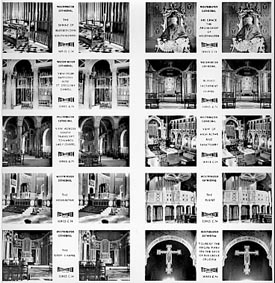 |
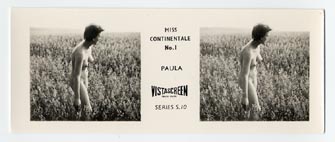 |
GLAMOUR Vistascreen ‘glamour’ photos in 3D are comprised of 11* ‘Miss Continentale’, 3 ‘Art Studies’ and 3 ‘Glamour Models’ sets. These were a slight bone of contention with some freelance agents who sold Vistascreen sets on commission, but the company had a ready market for the Glamour sets via their book publishing outlets and sold them direct (delivered in a brown paper wrapper, no doubt). Not always listed on the mini catalogue packed with every Vistascreen set (Miss Continentale has yet to be seen on any printed list) these nude sets were a mail order success with their glamour book customers. Now quite rare, original glamour sets are highly sought after and if complete and in mint condition have been known to change hands for anything up to £25.00 per set. *11 sets are now known, numbered from 1 to 11, A listing mentioning ‘Miss Continentale’ No 11 - Brenda was reported for sale on eBay in January 2005 and its' existence confirmed January 2007. Update - Nov 2008 Unknown set discovered. Set number C86 is titled Irving Theatre (Set One) and features between 3 and 7 nude artists on-stage, presumably in poses from the show. There is no record of this set in any official list and the fact that this is marked as Set One may indicate there are more! Opened in the late 1950s, the Irving Theatre is in Irving Street, WC2, less than a 10 minute walk from the Vistascreen office in Soho Square and is thought to be London's first Strip Club. |
|
|
|
THE BEGINNING OF THE END For a while, Stanley, in his own words was 'raking in the money'. He was on a director’s salary of around £17 per week (which in 1950’s was very respectable) AND a share of the profits. This latter scheme was to be the final downfall of the company as Stanley seems to have left after a big disagreement over how the actual ‘profits’ figure was arrived at. |
|
Without a full-time photographer and with no new sets being added, the popularity of the system started to decline. The whole business was finally sold out to Weetabix who continued the production of the viewers (in cream and then later in red) with their logo on the rear. These were sold for a subsidised 1/6d plus a special offer token printed on the Weetabix box. The actual 3D cards were given away inside the cereal box. Although all Weetabix cards were printed in full colour, their production was of basic quality, presumably due to the costs constraints of an on-pack promotion. |
|
Stanley Long and his production company
Fayrested now have their own web
page,
featuring stories from his past as well as exciting news about a forthcoming
TV series about movie making.
|
NEW VISTASCREEN FIND! I just came across this Vistascreen rarity - an advertising jigsaw (shame about the missing pieces). Vistascreen advertising material is very uncommon, but I have never seen nor heard of this before. I guess it was done as a one-off local promotion as the quality of the card is very basic, but they still managed to charge 1/6p for it! Any further information anyone?
Sadly, Stanley Long passed away on 10th September 2012 |
